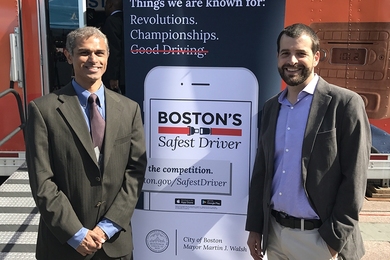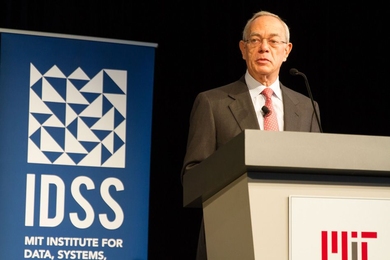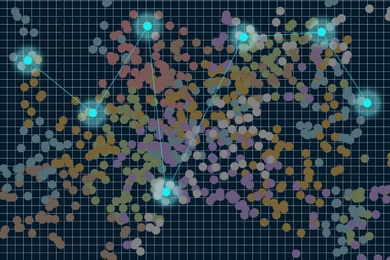Finding patterns in corrupted data
New model-fitting technique is efficient even for data sets with hundreds of variables.
Quantifying urban revitalization
Combining cellphone data with perceptions of public spaces could help guide urban planning.
Automating big-data analysis
With new algorithms, data scientists could accomplish in days what has traditionally taken months.
Making a splash in health care economics
Heidi Williams builds all-new data sets to answer questions about innovation and biomedical research.
Harnessing the power of citizens
PhD student Lily Bui works with communities around the world to gather data from the bottom up.
Optimizing parking in the busiest places
Data-analytics platform helps parking managers meet driver demand in high-traffic areas.
Rewarding Boston’s safest driver
Mayor Martin Walsh announces a competition aimed at improving Boston driving with an app developed by an MIT spinout.
How data can help change the world
At IDSS celebration, speakers explore how data can be brought to bear on global challenges.
Q&A: How Twitter explains the 2016 election
“Electome” project charts the national conversation in unique detail.
One year on, Institute for Data, Systems, and Society looks ahead
Event and new IDSS projects will provide insights into some of society's most pressing data challenges.
Calculating the financial risks of renewable energy
Financial-modeling software for sustainable-infrastructure projects could boost investment in sector.
Faster parallel computing
New programming language delivers fourfold speedups on problems common in the age of big data.
Surrounded by questions
PhD student Nils Wernerfelt deploys the tools of economics to address his many questions about the world.
Microchip enables fast, precise measurement of single-cell growth
Device that measures growth of many individual cells simultaneously could lead to rapid tests for antibiotics.




![“MIT is wonderful because in addition to [finding] an amazing home in economics, I can talk with and learn from a lot of people on the science side,” says Heidi Williams, the Class of 1957 Career Development Associate Professor in MIT’s Department of Economics.
MIT professor Heidi Williams](/sites/default/files/styles/term_page__news_article/public/images/201610/MIT-heidi-williams-01_0.jpg?itok=RYBkTTy6)









